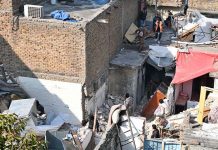-Int’l Day to End Impunity for Crimes against Journalists
By Minahil Makhdoom
ISLAMABAD: 2020 presents a grim picture for press freedom in Pakistan with multiple attempts to silence the voices of the media in the print, broadcast and online spheres. The media in Pakistan continues to work under an environment of fear and significant constraints to press freedom. The year 2020, so far, has seen numerous attempts to silence journalists and media personnel. The use of criminal complaints, abductions and online harassment have created an environment where the media is operating under high pressure with little to no security, protection or accountability for the perpetrators of these attacks.
According to the report by Pakistan Press Foundation (PPF) to commemorate the International Day to End Impunity for Crimes Against Journalists 2020 there have been a number of brazen attempts to intimidate and in turn silence journalists by picking them up and orchestrating their disappearances. The year saw two high profile abductions of journalists — Matiullah Jan from the capital, Islamabad and Ali Imran Syed in Karachi. Both cases were strongly condemned and the federal and provincial governments had ‘taken notice’ of the incidents. In both instances, the journalists were found safe hours after they went missing.
In Jan’s case, CCTV footage of the moments before he was abducted were circulated on social media. The Supreme Court of Pakistan took up the case of the senior journalist’s abduction and has recently rejected the report by the Islamabad Inspector General of Police. In at least one instance during 2020, a journalist was murdered in what appeared to be an act in connection to his work. On February 16, the body of KTN news channel and Sindh-language daily Kawish, Aziz Memon, was found in a water channel in the Naushahro Firoze district of the Sindh province.
These acts of picking up journalists show a worrying trend that appears to have been used to restrict press freedom in the country. In both cases, officials are yet to determine who was behind the acts. Such attempts of intimidation create an environment of fear for both the media and their loved ones. The lack of accountability or conclusive rulings to determine who was behind these abductions or disappearances, allows the perpetrators to get away scot free.
Journalists have also faced other forms of physical attacks such as being beaten, verbally threatened and arrested. After being arrested in March, almost eight months later, the Jang and Geo Media Group Editor in Chief Mir Shakil-ur-Rehman is still imprisoned on the basis of an old property case. In at least five other instances, journalists have been arrested during 2020. When they are not physically attacked, journalists are often threatened, a tool that can lead to self censorship by creating an environment of fear. In August, investigative journalist Ahmad Noorani received life threats following the publication of his investigative piece regarding the business fortunes of former director general of the Inter-Services Public Relations (ISPR) Retired Lt Gen Asim Saleem Bajwa.




